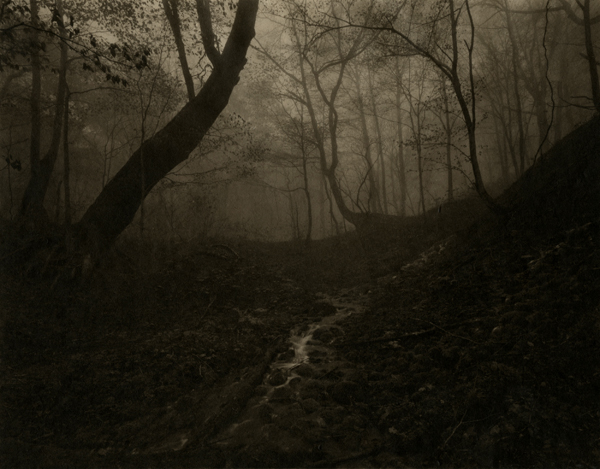
Alan Klotz Gallery 740 West End Avenue, Suite 52 NY 10025 New York États-Unis
It is surprising to learn that much of Japan is still forested. In an island nation, where land is at a premium, such forested areas are treasured, one might say, by extension, sacred. Takeshi would not quarrel with this notion. Although he lives in Tokyo, and for most of his life (by his own admission) has ignored Nature, he is now an avid walker in the woods, a student of its rhythms and textures, and a part-time resident. He has built a mountain lodge in the forest using the wood he has felled on the building's site and worked it into timbers with his own hands. It took him 10 years to complete it! The forest is a mystical place for him. It is a place for silence and contemplation...a place for learning about the power in Nature. For a city man the difference between the two environments must be enormous, but it is in the resulting torsion that revelation lives.
Takeshi is a classicist. His pictures are to some extent informed by other masters of the forest's detail, such as Eliot Porter and Paul Caponigro, both of whom eschewed the monumental single object, in favor of the thousands of tiny details that define the space, as well as describing the place. Takeshi follows this pattern. He would rather let the forest announce itself than to impose some previously developed external
esthetic notion upon it. This is where discovery lies, and that is what is at the core of this work, and what makes these pictures so startling and yet so quiet. They speak of the darkness, textures, and infinite variety of the forest, and all of this is reinforced by the craft employed by Mr. Shikama at the printing stage. Most of the work in the Silent Respiration of Forests Series and Evanescence Series (a series in five parts-
Forest, Field, Lotus, Garden and Landscape) that make up the majority of our show, are hand applied, platinum and palladium emulsion prints, on hand-made Japanese Gampi paper. Takeshi has as fine a hand as he has an eye. The paper resembles the Kodak Vitava Parchment paper Ansel Adams used for his Parmelian Prints in the late 1920's...they are to die for, and it is a shame to put them under glass. They are a testament to the rare but still vital craft that goes into the making of a truly virtuoso print
Takeshi has said that, "it cannot be denied that it has been quite a while since the chain of coexistence between nature and humans has been broken in contemporary Japan..." These photographs act as a reminder about our need for a real connection to the subtlety and force of Nature, which for most of us is a rare and distant experience. Perhaps Ansel Adams said it most succinctly when he wrote:
"There is a deeper thing to express- the return of humanity to some sort of balanced awareness of the natural things. Perhaps Photography can do this."
Indeed.

